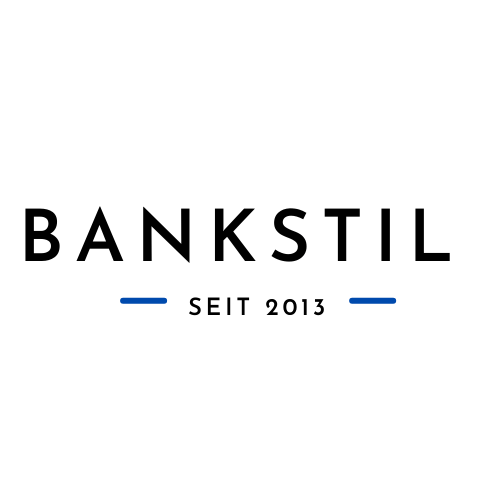Von Ralf Keuper
Die digitalen Währungen, deren bekanntester Vertreter Bitcoin ist, haben neben vielen Vorteilen auch einige Defizite, die einer bereiten Akzeptanz als Zahlungsmittel im Weg stehen. Da die Identität der Transaktionsteilnehmer nicht immer genau geklärt werden kann, wurde Bitcoin in der Vergangenheit häufig für die Abwicklung krimineller Geschäfte verwendet. Bekanntester Fall war die Bitcoin-Börse MtGox. Die Bekämpfung von Geldwäsche und Terrorismusfinanzierung ist mit den herkömmlichen digitalen Währungen kaum bis gar nicht möglich. Gerade in den USA ist das ein großes Hindernis für die Verbreitung digitaler Währungen. Mit dem Anspruch, für mehr Vertrauen und die nötige Akzeptanz in der Öffentlichkeit und den Regierungen zu sorgen, tritt der AML Bitcoin an, wie in AML Bitcoin wird in Panama lanciert zu lesen ist. Darin heisst es u.a.:
Der AML Bitcoin, der von der NAC Fundation entwickelt wurde, soll ein „Umfeld schaffen, in dem Vertrauen, Glaubwürdigkeit und Vertrauen zwischen den Organisationen, Finanzinstituten, der Öffentlichkeit, Partnern und Aktionären entsteht, um so als digitale weltweite Währung anerkannt zu werden“. Die neue digitale Währung ist so konzipiert, dass sie den Anti-Geldwäsche-Gesetzen und dem KYC (Kenne-deinen-Kunden) Vorschriften entspricht, um so die Identität der Kunden überprüfen zu können. Zudem wird der AML Bitcoin auch alle Anforderungen des US-Patriot-Gesetzes erfüllen, das für die Banken und Finanzsektoren relevant sind.
In dem White Paper of AML BitCoin (AMLBit) and its Business Model ist weiterhin zu erfahren:
NAC Foundation, LLC (“NAC”) created AML BitCoin and its predecessor digital currency, the Aten Coin. Both coins contain the innovative safety and compliance features developed by NAC. AML BitCoin also provides a platform for approved third parties to utilize the AML BitCoin technology. AML BitCoin rests on a privately regulated public blockchain that facilitates AML-KYC (anti-money laundering – ‘know your customer’) compliance and identifies criminals associated with illicit transactions, while maintaining and strengthening the privacy protections for legitimate users.
Nur Personen, deren Identität zuvor zweifelsfrei festgestellt werden konnte, sind zur Teilnahme am AML BitCoin-System berechtigt:
The new AML BitCoin platform will also allow pre-approved persons and entities (but tied to an individual who has a certified digital identity profile) to utilize NAC’s privately regulated public blockchain.
Abgesehen von der Zentralisierung bei der Überwachung von Geldwäsche und Terrorismusfinanzierung soll die dezentrale, offene Architektur von Bitcoin erhalten bleiben:
The AML BitCoin is a virtual currency – a payment system. It will be an open/transparent blockchain except for AML compliance, including suspicious activity reviews and reporting. Some AML BitCoin will be available for mining.
Die erste Initiative, eine identitätsbasierte digitale Währung zu etablieren, stammt aus dem Jahr 2012:
The development of the identity-based AML compliant digital currency commenced in 2012 and NAC was formed in 2014. Using proprietary technology, this identity-based digital currency is compliant with laws, statutes, rules, and regulations that govern, regulate, and relate to preventing money-laundering, terrorism, identity theft, financial crimes, and know-your-customer laws …
Kern der Anwendung ist das von der NAC (National Aten Coin) entwickelte Identitifzierungsprotokoll, das auf den Prozessen
(i) personal identity verification,
(ii) credential authentication, and
(iii) a two-party signature scheme
beruht.
In der Praxis bedeutet das:
In order to obtain authorization from NAC, each AML BitCoin user must have created a certified digital identity and must have agreed to comply with the terms and conditions on the AML BitCoin and related websites. This registration process assures that each potential AML BitCoin user will have presented valid documentation to confirm their legal identity. Once an AML BitCoin user has successfully registered in NAC’s system, they will be provided with an AML BitCoin ID, and only then will they be allowed to create their private AML BitCoin credentials to create an AML BitCoin address with which to conduct AML BitCoin transactions.
Zur Überwachungsfunktion:
NAC may reveal identities of senders and receivers associated with any transactions that rise to the legal definition of suspicious activities, such as association with money laundering, hacking or other illegal activities, while simultaneously maintaining privacy of AML BitCoin users. Senders and receivers of all transactions can be revealed; thus, any thieves or hackers who steal AML BitCoins can be easily traced and tracked by retrieving personal identity(s) of the receiver(s) from the client information database maintained by NAC. Moreover, the credential authentication mechanism behind AML BitCoin allows a user to change their credentials to prevent the transfer of AML BitCoins from a stolen wallet. As a result, NAC’s innovations can thwart the theft of AML BitCoin.
Die NAC will die Lösung auch als White Label zur Verfügung stellen:
NAC will make its white-labelled AML/KYC compliant platform available to pre-approved users. In that regard NAC will assist businesses, institutions, and governments interested in using NAC’s AML-KYC compliant blockchain technology to create their own AML-KYC complaint solutions, including, by providing technical support services through NAC’s whitelabeled blockchain platform. (Those pre-approved users who create a modified AML compliant product may make the transaction time-lock feature referenced above mandatory or optional.) NAC will evaluate applications for participating in its platform to ensure compliance with NAC’s legal and ethical standards.
Die Initiatoren der NAC und andere hoffen, mit dem AML BitCoin die Bedenken der Regierungen und der Banken ausräumen zu können und der Wirtschaft die Möglichkeit zu geben, von der dynamischen Entwicklung der Kryptowährungen zu profitieren.
Ohne eine Regulierungsinstanz, so scheint es, bleibt digitalen Währungen der Durchbruch versagt, ganz abgesehen von der Frage der Transaktionsgeschwindigkeit, die mit dem momentan noch vorherrschenden Proof of Work – Verfahren den Mining Pools in die Hände spielt. Ob das Proof – of – Stake – Verfahren die Lösung ist, muss sich erst noch zeigen. Abzuwarten bleibt auch, wie die Bitcoin-Community reagiert, widerspricht der AML Bitcoin dem ursprünglichen dezentralen Ansatz. Der Staat würde darin jedenfalls eine wichtige Rolle übernehmen.
Crosspost von Identity Economy
Weitere Informationen:
